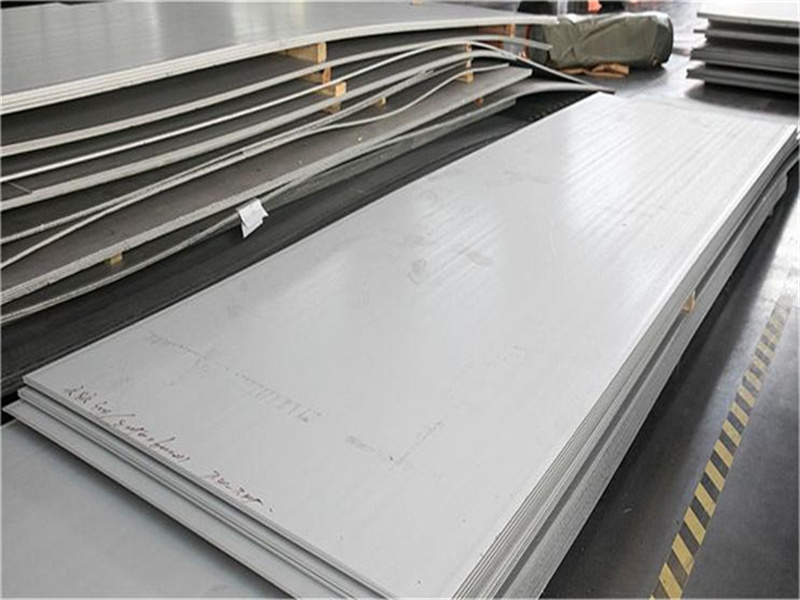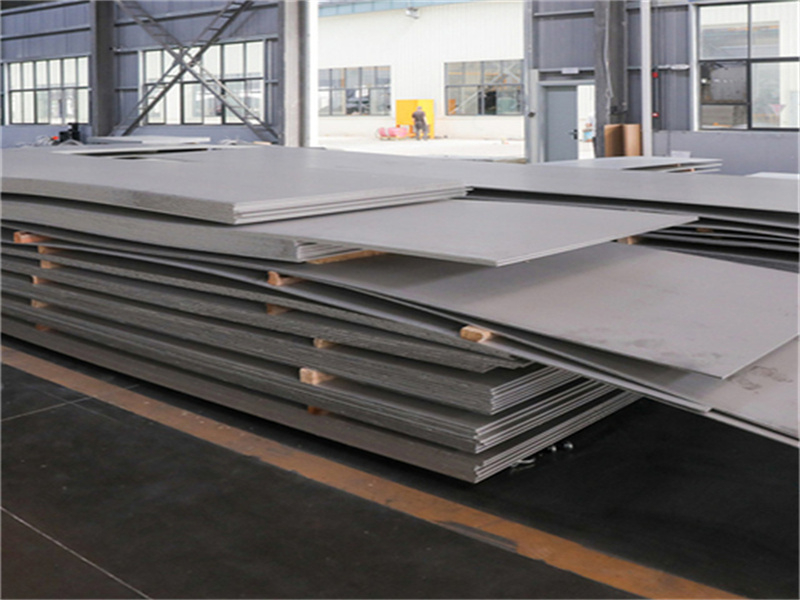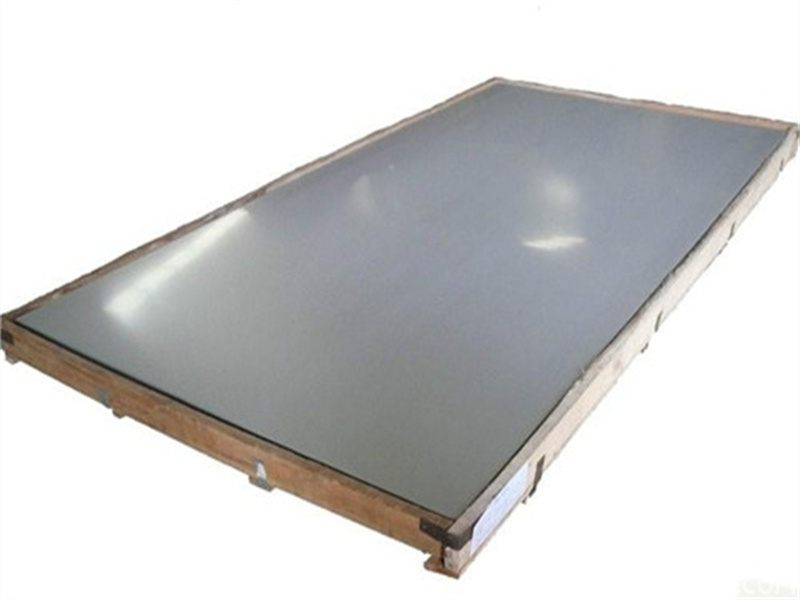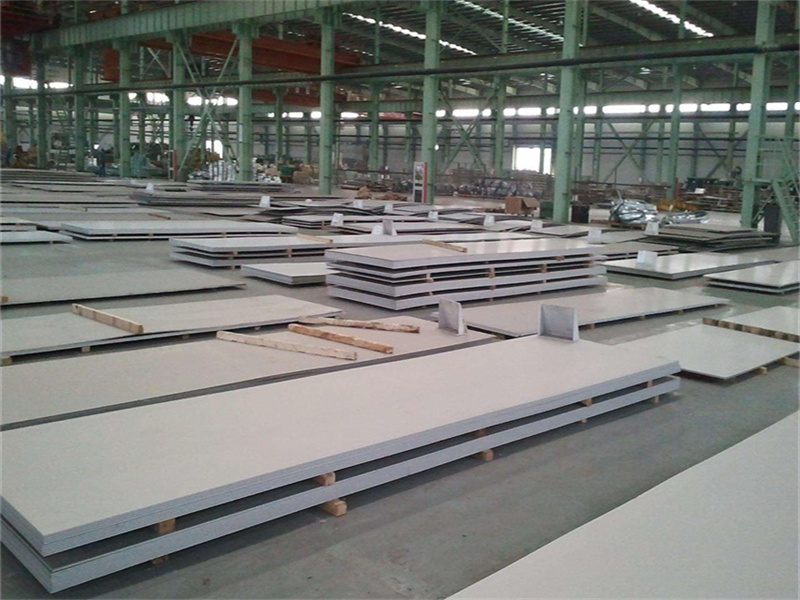We use cookies to improve your experience. By continuing to browse this site, you agree to our use of cookies. More information.
Stainless steel is more than just a corrosion resistant metal. Stainless steel is often chosen as a versatile material for many applications due to its strength, corrosion resistance and ability to adapt to specific conditions.
304 304L 316 316L Stainless steel plate suppliers in china
Stainless Steel 304 is the most widely used stainless steel grade. It is a chromium-nickel austenitic stainless steel with relatively low carbon content and somewhat higher chromium and nickel than AISI types 301 and 302. Grade 304 is very ductile when in an annealed condition. It has good elevated temperature properties as well as good toughness at low temperatures. It is well suited for welding and where the finished product must resist the more severe forms of corrosion.

Product Specification and Steel Grade (For Reference)
| ASTM | JIS | AISI | EN | Mill’s Standard | |
| Grade | S30100S30400
S30403 S31008 S31603 S32100 S41008 S43000 S43932 S44400 S44500 |
SUS301SUS304
SUS304L SUS310S - SUS321 SUS410S SUS430 - SUS444 SUS430J1L |
301304
304L 310S 316L 321 410S 430 - 444 - |
1.43101.4301
1.4307 1.4845 1.4404 1.4541 - 1.4016 1.4510 1.4521 - |
201202
204Cu3 |

Tolerance of Width
| Tolerance of Width | ||
| W < 100 mm | 100 mm ≦ W < 1000 mm | 1000 mm ≦ W < 1600 mm |
| ± 0.10 mm | ± 0.25 mm | ± 0.30 mm |
Chemical Composition & Mechanical Property
Chemical Composition (For Reference)
ASTM Specification
| Steel Grade | Ni% Max. | Cr% Max. | C% Max. | Si% Max. | Mn% Max. | P% Max. | S% Max. | Mo% Max. | Ti% Max. | Other |
| S30100 | 6.0~8.0 | 16.0~18.0 | 0.15 | 1 | 2 | 0.045 | 0.03 | - | - | N: 0.1 Max. |
| S30400 | 8.0~10.5 | 17.5~19.5 | 0.07 | 0.75 | 2 | 0.045 | 0.03 | - | - | N: 0.1 Max. |
| S30403 | 8.0~12.0 | 17.5~19.5 | 0.03 | 0.75 | 2 | 0.045 | 0.03 | - | - | N: 0.1 Max. |
| S31008 | 19.0~22.0 | 24.0~26.0 | 0.08 | 1.5 | 2 | 0.045 | 0.03 | - | - | - |
| S31603 | 10.0~14.0 | 16.0~18.0 | 0.03 | 0.75 | 2 | 0.045 | 0.03 | 2.0~3.0 | - | N: 0.1 Max. |
| S32100 | 9.0~12.0 | 17.0~19.0 | 0.08 | 0.75 | 2 | 0.045 | 0.03 | - | 5(C+N)~0.70 | N: 0.1 Max. |
| S41000 | 0.75 | 11.5~13.5 | 0.08~0.15 | 1 | 1 | 0.04 | 0.03 | - | - | - |
| S43000 | 0.75 | 16.0~18.0 | 0.12 | 1 | 1 | 0.04 | 0.03 | - | - | - |
| S43932 | 0.5 | 17.0~19.0 | 0.03 | 1 | 1 | 0.04 | 0.03 | - | - | N: 0.03 Max.Al: 0.15 Max.Nb+Ti = [ 0.20 + 4 ( C + N ) ] ~ 0.75 |

Mechanical Property (For Reference)
ASTM Specification
| Steel Grade | N/mm 2 MIN.Tensile Stress | N/mm 2 MIN.Proof Stress | % MIN.Elongation | HRB MAX.Hardness | HBW MAX.Hardness | Bendability:Bending Angle | Bendability:Inside Radius |
| S30100 | 515 | 205 | 40 | 95 | 217 | No Require | - |
| S30400 | 515 | 205 | 40 | 92 | 201 | No Require | - |
| S30403 | 485 | 170 | 40 | 92 | 201 | No Require | - |
| S31008 | 515 | 205 | 40 | 95 | 217 | No Require | - |
| S31603 | 485 | 170 | 40 | 95 | 217 | No Require | - |
| S32100 | 515 | 205 | 40 | 95 | 217 | No Require | - |
| S41000 | 450 | 205 | 20 | 96 | 217 | 180° | - |
| S43000 | 450 | 205 | 22A | 89 | 183 | 180° | - |

This applies not only to the different chemical compositions that make up stainless steel, but also to the different coatings and surface treatments that are applied depending on the end intended use of the product.
Grade 2B is one of the most commonly used surface treatments in the stainless steel industry. It is semi-reflective, smooth and uniform, though not a mirror. Surface preparation is the final step in the process: the steel sheet is first formed by pressing between rolls at the outlet of the furnace. It is then softened by annealing and then re-passed through rolls.
To remove surface contaminants, the surface is acid-etched and passed between polishing rollers several times to achieve the desired thickness. It was this last pass that led to the completion of 2B.
2B is the standard finish on common stainless steel grades, including 201, 304, 304 L, and 316 L. The popularity of 2B polishing, in addition to being economical and more corrosion resistant, lies in the ease of polishing with a cloth wheel and compound.
Typically, 2B finish steel is used in food processing, bakery equipment, containers, storage tanks, and pharmaceutical equipment and meets USDA standards for these industries.
This approach is not acceptable when the final product is an injectable or otic solution. This is because gaps or pockets can form on the metal surface. These voids can trap contaminants below the polished surface or in the metal. Eventually, these foreign objects can escape and contaminate the product. Surface electropolishing is the ideal and recommended method for improving surface smoothness for such applications.
Electropolishing works by using chemicals and electricity to smooth out raised areas on a stainless steel surface. Even with a factory applied Smooth 2B Coating, the actual stainless steel surface will not appear smooth when magnified.
Average Roughness (Ra) is used to refer to the smoothness of a metal surface and is a comparison of the average difference between low and high points on a surface over time.
Typically, factory fresh stainless steel with a 2B finish has a Ra value in the range of 0.3 micron (0.0003 mm) to 1 micron (0.001 mm) depending on its thickness (thickness). Surface Ra can be reduced to 4-32 micro inches by proper electropolishing, depending on the characteristics of the metal.
A class 2B finish is achieved by compressing the material with two rollers. Some operators require trim repairs after refurbishment or repair of the vessel or other equipment.
Although the surface finish obtained by mechanical or electropolishing is not easily reproducible, it can be very close, especially with regard to Ra values. As a result of proper electropolishing treatment, even better performance in terms of material processing can be achieved than with the original unfinished 2B surface treatment.
Therefore, a 2B estimate can be considered a good starting point. 2B coatings have well-known benefits and are economical. It can be further enhanced with electropolishing for a smoother finish, higher standards and a range of long-term benefits.
This information has been verified and adapted from materials provided by Astro Pak Corporation.
Astropack Corporation. (March 7, 2023). The difference between electropolished and non-electropolished surfaces. AZ. Retrieved July 24, 2023 from https://www.azom.com/article.aspx?ArticleID=22050.
Astropack Corporation. “Differences between electropolished and non-electropolished surfaces”. AZ. July 24, 2023 .
Astropack Corporation. “Differences between electropolished and non-electropolished surfaces”. AZ. https://www.azom.com/article.aspx?ArticleID=22050. (As of July 24, 2023).
Astropack Corporation. 2023. Differences between electropolished and non-electropolished surfaces. AZoM, accessed 24 July 2023, https://www.azom.com/article.aspx?ArticleID=22050.
Post time: Jul-25-2023
